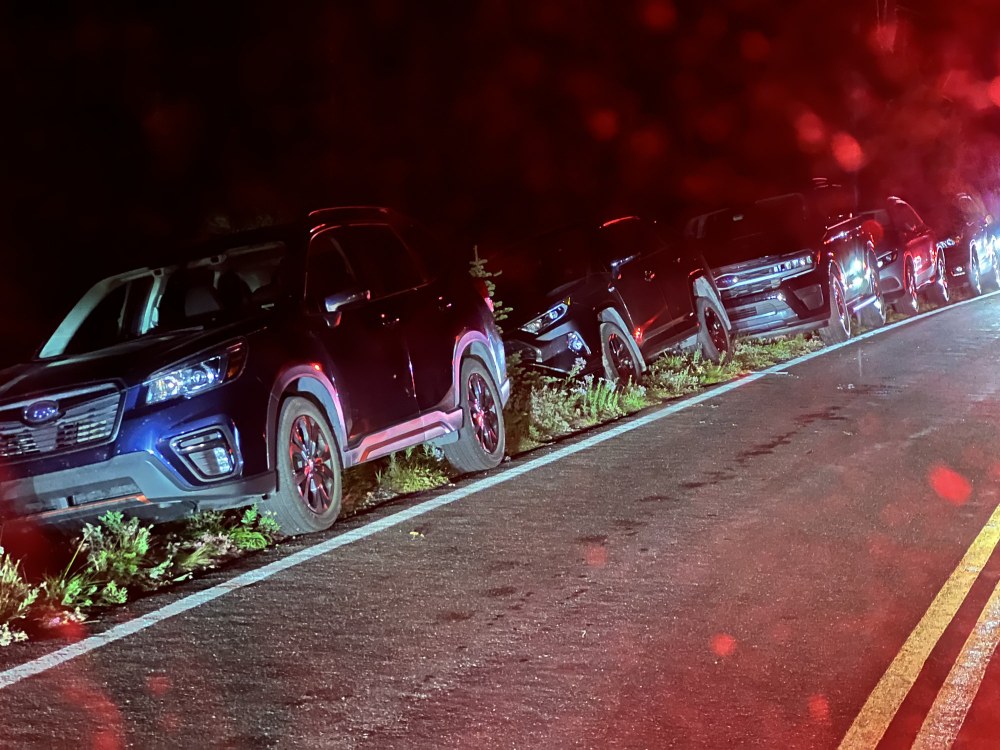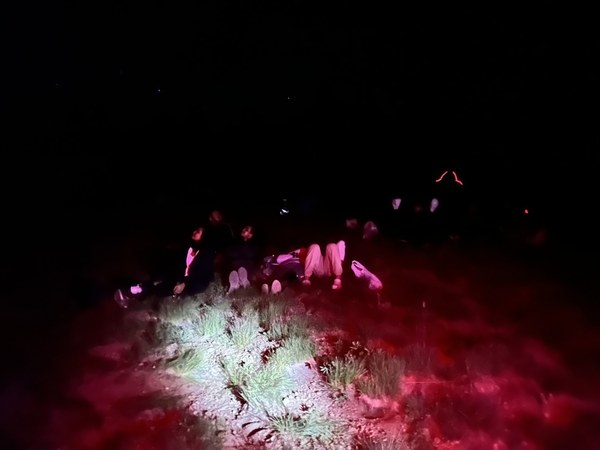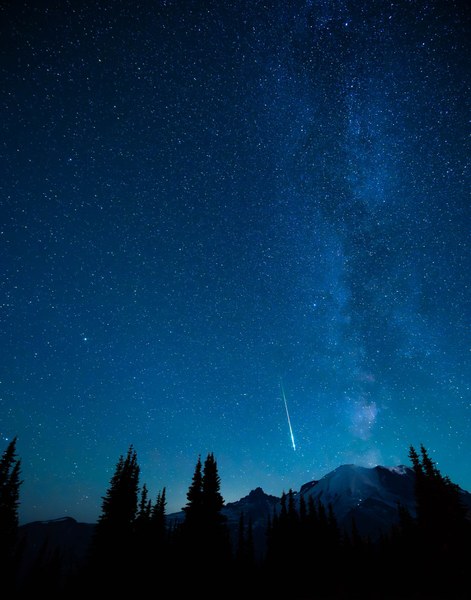
A recent trip to Mount Rainier National Park during the Perseid meteor shower offered a stark reminder of how important it is to adhere to mindful and low impact recreation practices. I spent my professional career working to protect and restore public lands, and that evening was frustrating, frightening, and heartbreaking. I want to encourage all members and volunteers to increase outreach to our community – and especially non-members – on the ethical use of natural places and proper etiquette when there.
Four Mountaineer leaders led hikes at Mount Rainier from August 10-14 and made three additional scouting trips. What we saw and experienced on the evening of Saturday and into Sunday morning was distressing to witness.
On all three nights, we discovered a lot of night hikers. People had gone to Fremont Lookout to watch the sunset and drifted back well past midnight. On Saturday, new hikers were still heading up the trail at 3am. Many hikers shined their bright headlamps or flashlights directly on other hikers’ eyes and often huffed when asked not to.
Apparently, several media outlets in Seattle and Tacoma told their followers that the best place to see the Perseid Meteor Shower was the Sunrise area of Mount Rainier National Park. Sunrise is an outstanding place, but the crowds far exceeded the capacity of this area. Cars were illegally parked, not only in the parking lot, but on the subalpine meadows. People tromped across the meadows and placed tents, sleeping bags, tables, chairs, blow-up beds, barbecues, and portable fire pits on top of sensitive plants.
 Meteor shower viewers on top of sensitive plants. Photo courtesy of Tom Bancroft.
Meteor shower viewers on top of sensitive plants. Photo courtesy of Tom Bancroft.
Dr. David Giblin of the University of Washington said the subalpine meadow plants are long-lived but highly sensitive to disturbance. A dozen boots on top of a Lomatium could kill a hundred-year-old plant. The damage to the meadows must have been extensive.
Several of us spent time asking people to stay on the trails and not shine their lights into others’ eyes. Sadly, most of the folks I encountered didn’t seem to care about the plants and were often unwilling to return to the trails.
Not only were the meadows abused, but we witnessed the park staff and volunteers abused as they tried in vain to control the crowds and protect the meadows. We also heard from several Park Service employees and volunteers that some visitors were rude and dismissive.
The degradation caused that night may take decades to recover.
A call to action
The National Parks and public lands are available for all people to visit, and it is lovely to see people exploring them while following rules that protect the land. We heard many languages spoken by people admiring the landscape and stars, and we appreciate that Mount Rainier is a place where everyone can come together and witness the beauty of our public lands.
But these beautiful places need to be treated with care. Restoring the subalpine meadows will take significant time and care, and the Park Service and all public land agencies need our help and support.
What you can do
We desperately need to continue recreating mindfully and educating others on the value of public lands, their fragility, and care. We can help protect our favorite natural places by staying on trails, following the rules, helping with trail maintenance and restoration projects, and working with land agencies and conservation groups.
You can also personally follow and help share Leave No Trace principles and Low Impact Recreation concepts. The Leave No Trace principles are good and cover wildlife disturbance well, but they only indirectly consider vegetation by suggesting that people stay on durable surfaces. It’s important to refrain from stepping on fragile ecological communities like subalpine and alpine meadows as well as riparian areas.
Being considerate of other visitors is another important component of Leave No Trace that should be emphasized. Being courteous, respecting other visitors, and protecting the quality of other hikers’ experience is an important part of recreating mindfully. Along with protecting fragile ecosystems, recreationists must also respect Park staff and other visitors.
And most importantly, please share your love of the outdoors with others. Sharing that love and how you protect the outdoors might be the most important thing we can do. And thank park staff and volunteers every chance you get. I hope all Mountaineers will do their part in making sure this doesn’t happen again.
 Meteor over Mount Rainier, with the Milky Way. Photo by Tom Bancroft.
Meteor over Mount Rainier, with the Milky Way. Photo by Tom Bancroft.
Add a comment
Log in to add comments.Tom,
I read a letter to the editor in the Seattle Times, perhaps by you? Also heard from friends what a desecration it was at Sunrise. I would like to contact the media outlets involved and write my own letter to the editor of the Times which I subscribe to. This irresponsible trumpeting of information without regard for consequences should be responded to. Please advise as to a course of action.
thanks, Marcia Lupton
How many tickets at what $ did the park service issue to help with the cost of rehabing the damage?
There are several hiking groups on Meetup forming huge groups, far exceeding 12, for such outings at Sunrise. I signed up for one, and canceled when the group exceeded 12, then watched as the size exceeded 68! No consideration for nature.
I was there also and witnessed the mayhem. It was very disturbing. One unfortunate thing is that the park was no longer manning the entrance booth so could not control the plethora of traffic that way nor collect the bounty that could have helped pay for restoration efforts.
A few things come to mind, One the park lets people in and typically asks where they are going and we all know there is not enough parking but the park makes money or observes passes.
From long ago I remember that typically about 3 miles into a hike only regular hikers were on the trail and were respectful of the environment and other people.
On special events or during weekends or busy periods the park should have a shuttle service with a large parking area just inside the park away from the road. That would be much cheaper and have the least impact on the park.
 Thomas Bancroft
Thomas Bancroft